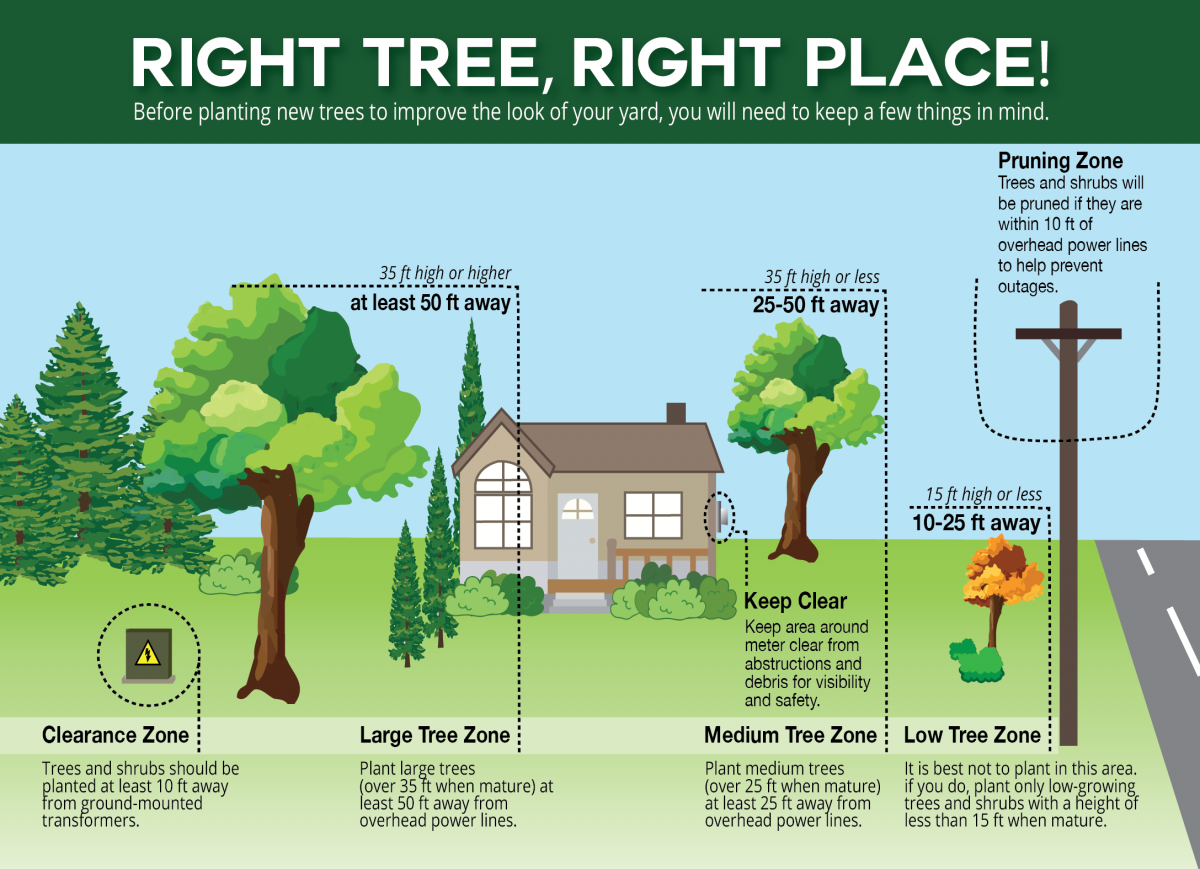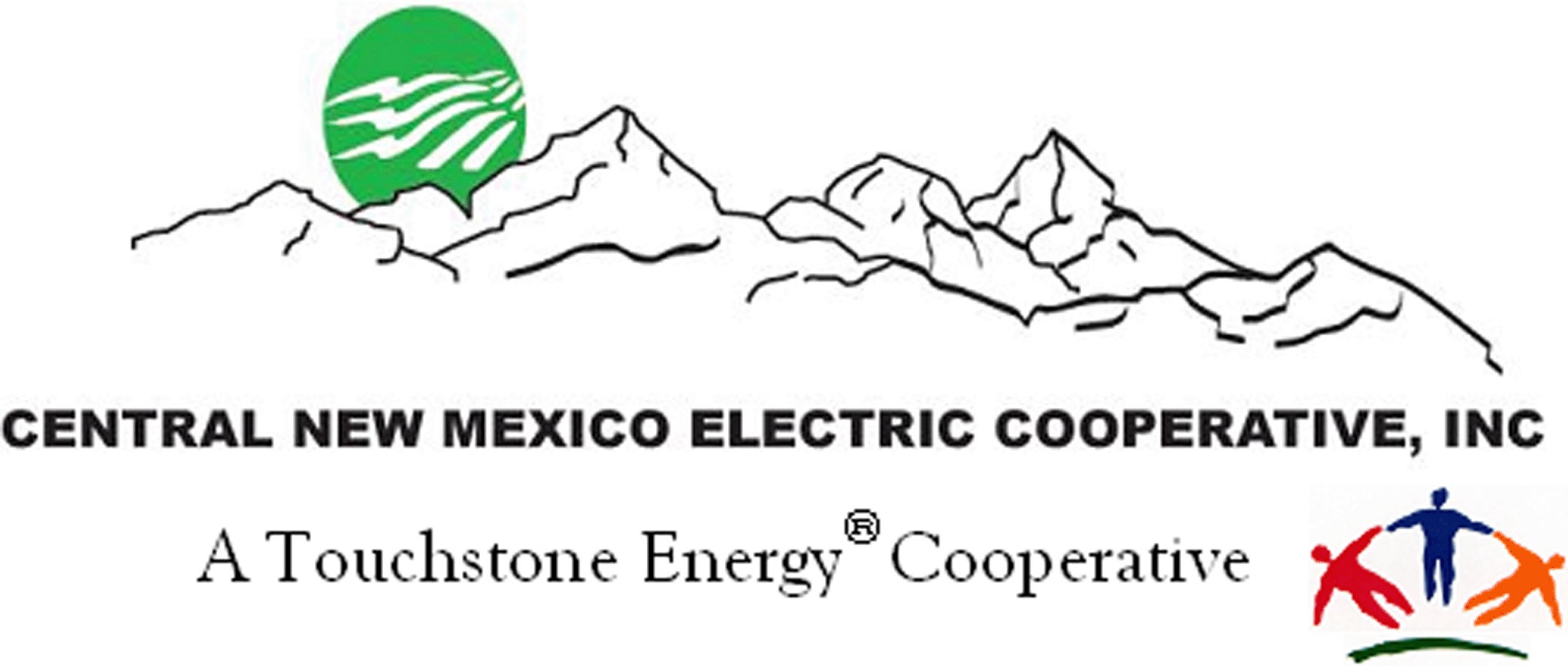Trees, Power Lines & Right-of-Way Safety
Maintaining Public Safety
CNMEC's power line right-of-way responsibilities are first, to maintain public safety and the safety of our employees, and second, to keep power flowing reliably across our electric distribution system, delivering electricity to our members.
To deliver this power, CNMEC owns and maintains more than 4,500 miles of line. To keep these lines humming with electricity, CNMEC line crews regularly patrol its lines to make sure the equipment is in good shape, conditions on the rights-of-way below are safe, and our crews can safely access the power lines and equipment in all kinds of weather. We identify and repair broken insulators and damaged sections of power line. We repair or replace cross arms and power poles as needed.
Our crews also look for potentially dangerous situations in the rights of way. Swimming pools, buildings, irrigation equipment, wire fences and tall trees can all be dangerous—when too close to power lines.
Fire, Electrical Hazards
Trees growing near power lines can cause a fire, as well as an electrical, hazard to anyone in contact with the tree at ground level. Trees don’t have to physically touch an energized power line to be dangerous. Electricity can arc from the power line to nearby trees given the right conditions, such as a voltage surge on the line from a nearby lightning strike. This electric current can kill anyone caught near the tree and can cause a fire.
This arcing can also cause power outages. Tree-related power outages are more than just an inconvenience. They not only disrupt service to your home or business, they also disrupt power to hospitals, emergency response centers and patients on life-support equipment.
The National Electric Safety Code specifies power lines be kept specific distances from nearby objects—including trees. The code requires greater clearances for higher voltage lines. For the same safety reasons, transmission line rights of way are wider than for local distribution lines

Clearance: How danger is Controlled
Electricity travels on power lines high above the ground. However, like water, electricity seeks the most direct path to the ground through nearby objects. Just like lightning, electric current in a power line may seek to reach the ground by jumping, or arcing, to a tall-growing tree. To avoid this, CNMEC maintains a safe distance between its power lines and tree limbs. The higher the voltage of the power line, the more clearance required.
Clearances between power lines and other objects, including trees, must allow for line sag. During warm weather or when the line is carrying heavy electrical loads, it heats up and stretches. This makes the line longer and it sags closer to the ground or objects underneath it. Because the amount of sag varies with electrical load, weather and line composition, a safe clearance distance in winter may not provide the same safety on the warmest summer days. Thus, to maintain a safe distance between the line and anything that can conduct electricity, CNMEC maintains a clear zone on all sides and below its power lines.
Tall growing trees or other tall objects that could fall into a power line must be removed. Heavy winds can blow branches into power lines and additional weight from snow and ice can bend or break branches, bringing them close enough to cause a flashover.
Neighborly Right-of-Way Uses
CNMEC works with landowners and communities to allow compatible uses within its rights-of-way. Farming, grazing, open space, parks, parking lots, bike paths and hiking trails are just some of these compatible uses.
Nevertheless, there are situations when CNMEC must responsibly cut trees to maintain safety and reliability. We are committed to working with landowners to minimize the impacts when we must remove trees. Our policy is to continue to work with property and landowners to minimize the need to cut trees, while always emphasizing our most important “good neighbor” activity, which is maintaining a safe right of way and providing reliable electricity.
CNMEC’s Commitment to Property and Landowners
If we must cut trees on your land, we promise to:
- Make a good faith effort to contact you before we routinely cut down trees on your property.
- In the event of an emergency situation requiring our immediate action, we’ll contact you as soon as reasonably possible.
- Make every effort to protect your property from damage.
- Either leave the logs for your use or haul them away, as you request.
- Remove and/or chip all branches and haul the chips off site, unless you want to keep the chips for use as mulch.
- Cut trees in an environmentally responsible way.
What Can You Do to Help?
Property owners should review the rules and regulations to become familiar with its provisions on member responsibilities. You can call CNMEC at (505) 832-4483 if you have questions or need additional information about safe uses of your property under or near our lines.
Even though our crews regularly inspect our power lines, you can help us if you notice anything such as trees or limbs that might interfere with our power lines. You can also help stop potential power line problems before they start. If you’re planning to plant trees on your property, don’t plant them under the power lines. Shrubs, hedges and other plants must also be kept away from power poles and off power line access roads.
Dense stands of trees, shrubs or hedges make it difficult to get to power lines or electrical equipment to repair or maintain them. They may also make the difficult job of maintaining the electrical system even more hazardous to the line crews.
Tree Cutting and Power Line Safety
Always look for nearby power lines before beginning to cut down any tree. Call us before cutting down any tree that might fall into a power line.
Treat all power lines as energized. Never climb or attempt to fell a tree that has a limb caught in a power line. You may not see any visible evidence the tree is electrified or dangerous. Beware of this hidden hazard. Trees that could reach a power line should never be felled by a land owner. If a tree falls into a power line, stop at once! Stay clear and call CNMEC at (505) 832-4483.
Maintain the required clearances between any equipment and power lines. If equipment comes into contact with a power line, stop at once! Instruct the operator to stay on the equipment until help arrives. Keep others away.
If a fire starts from an electrical contact or a downed power line, contain the fire if possible, but keep all firefighting equipment and people away from the downed line. Do not use water near the downed line. Notify the local fire department and CNMEC immediately. Stay clear of the line and treat it as energized. IN AN EMERGENCY, CALL 911.
